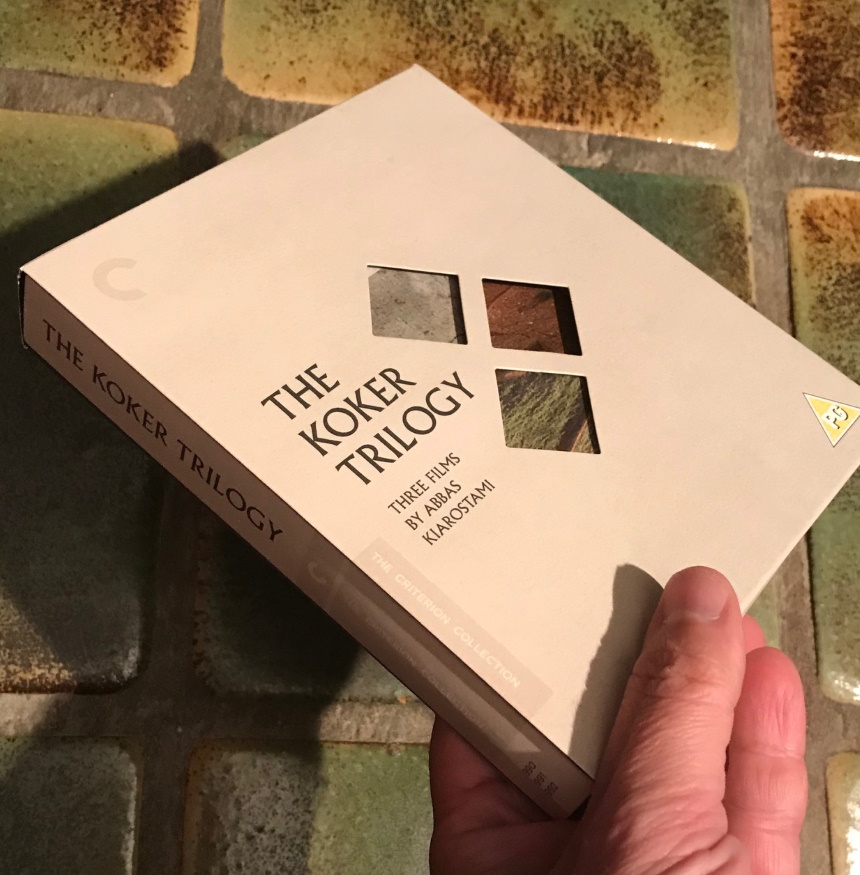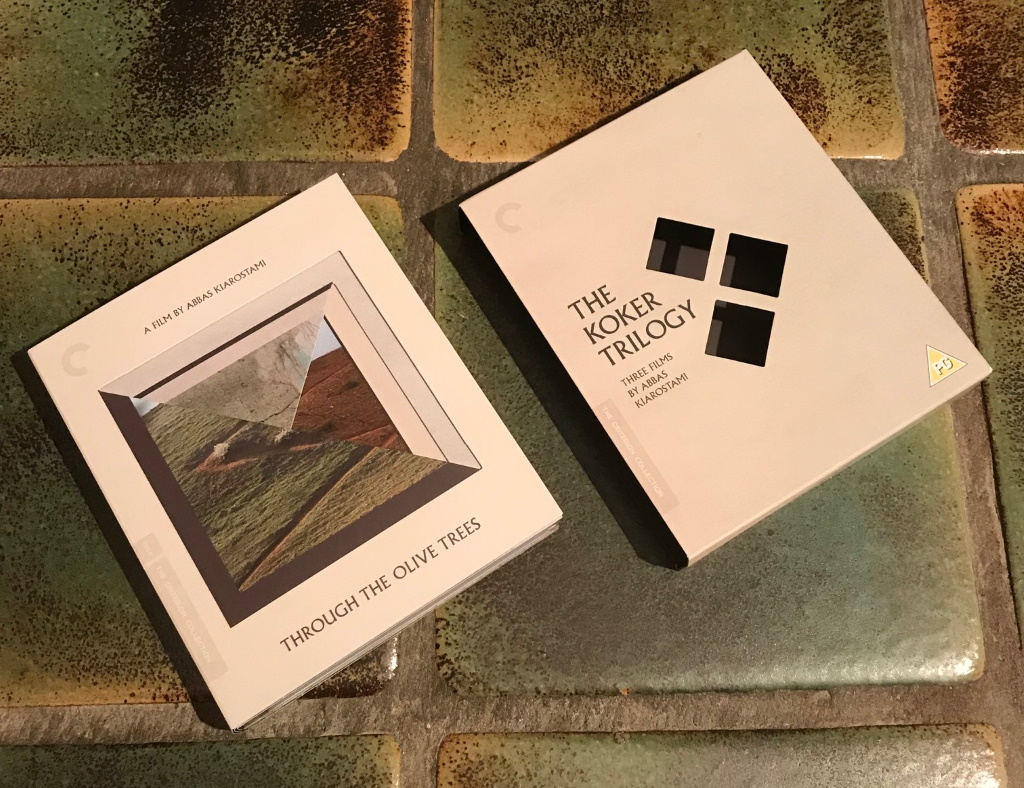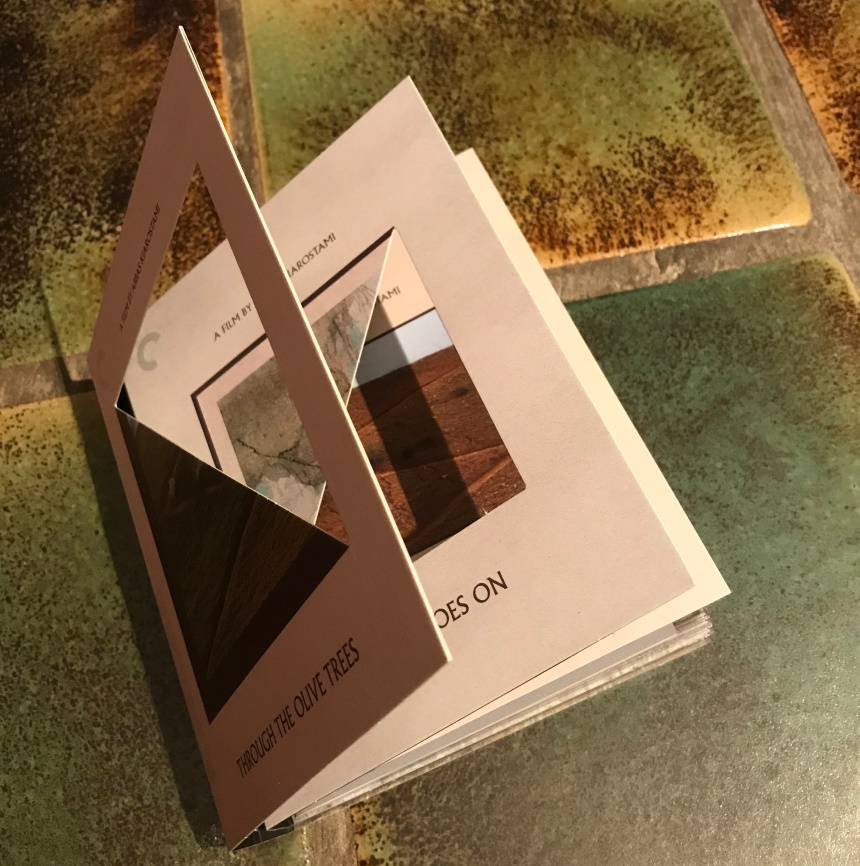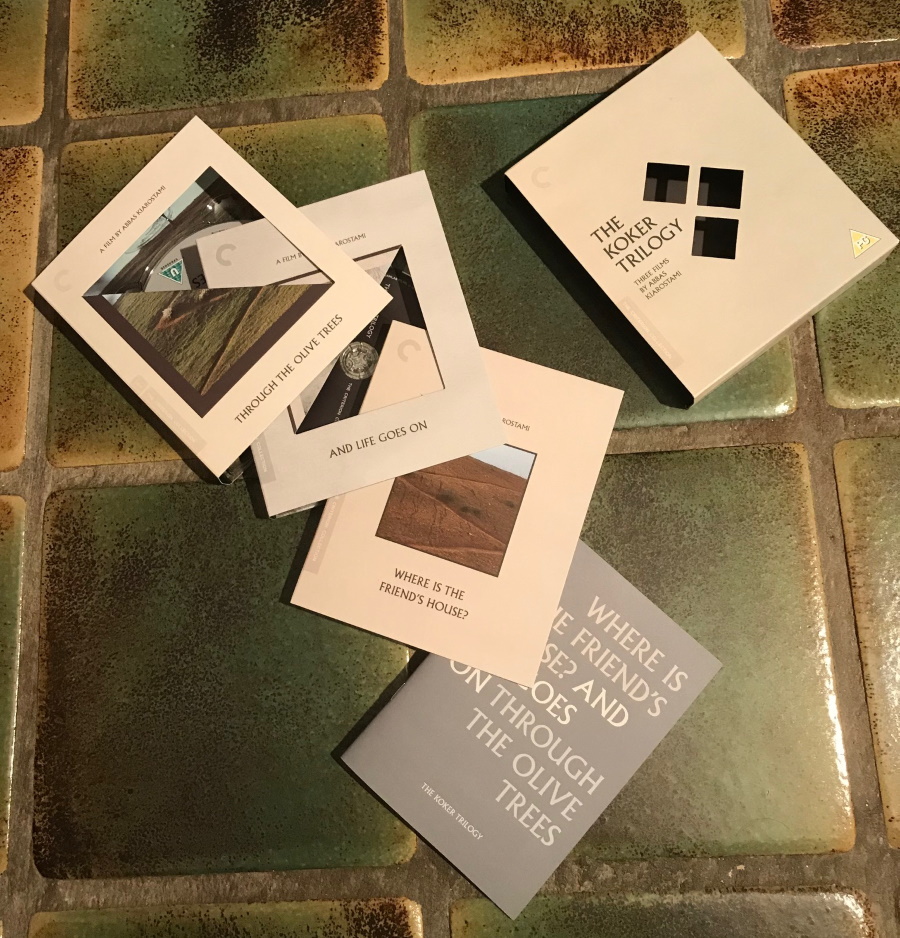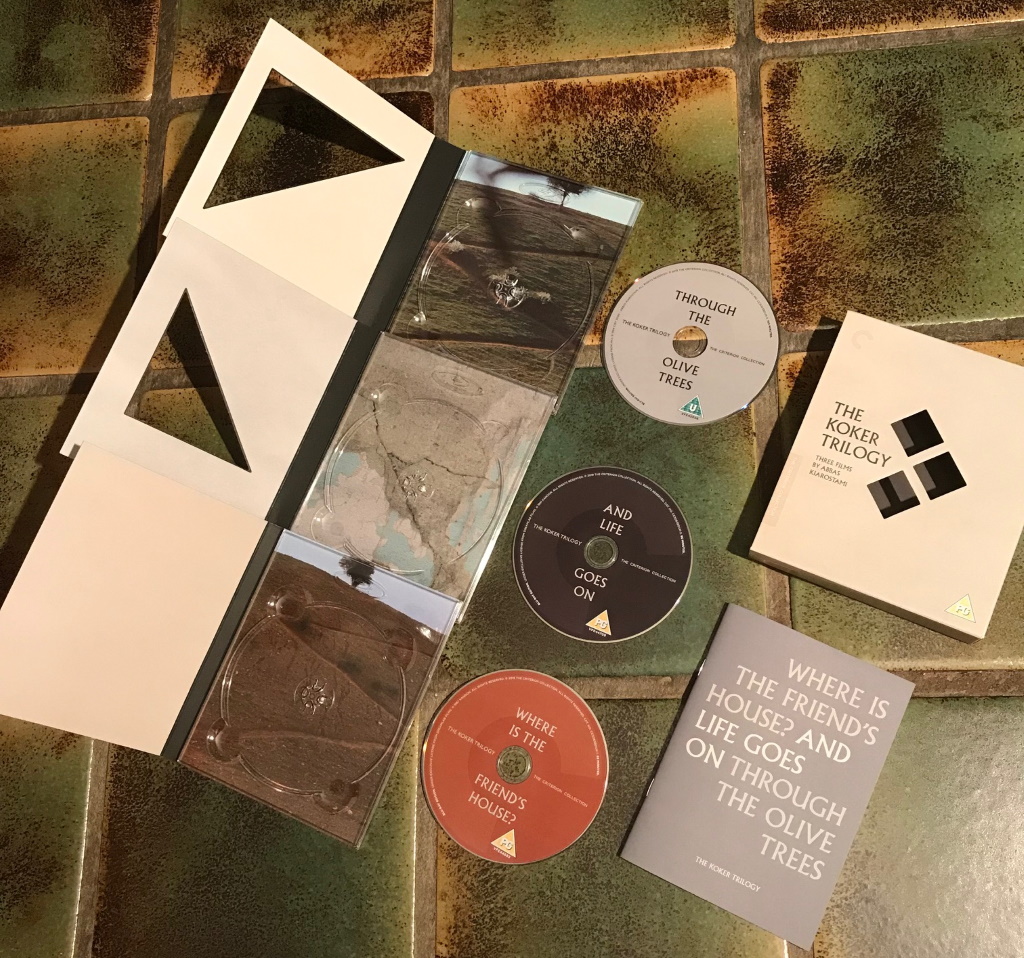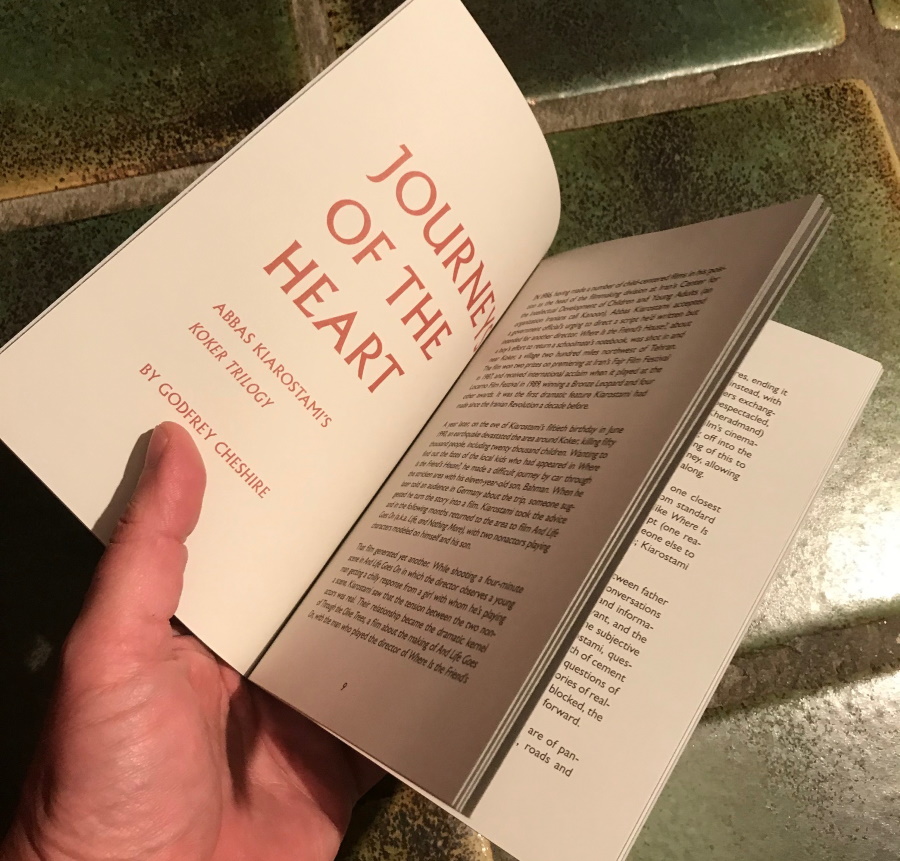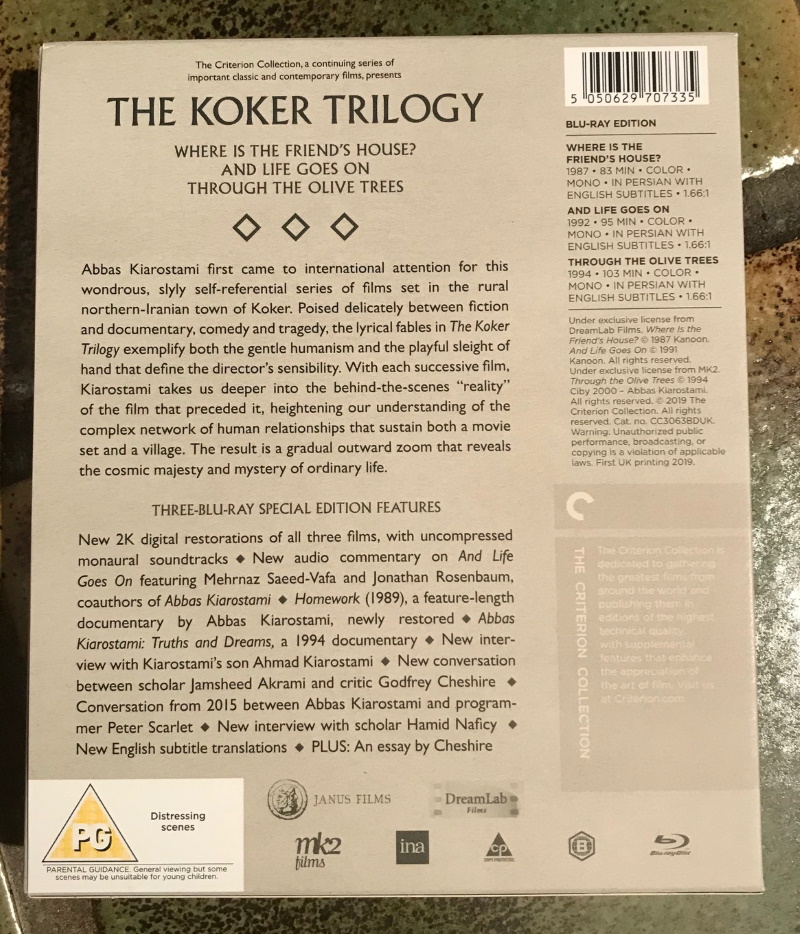Pretty Packaging: Criterion's THE KOKER TRILOGY Is An Iranian Russian Doll
If we look at the Blu-ray distributing landscape, I think nobody will contest that Criterion is the most prestigious company in existence there. From 1984 onward the company has focused on quality, and, quoting Wikipedia: "Criterion is noted for helping to standardize a number of new ideas, such as the letterbox format for widescreen films, adding bonus features, commentary tracks, doing film restoration, and releasing special editions for home video."
As a collector, it's always worth checking what Criterion is doing, but while their releases are almost always excellent in the on-disc department, it's rare for them to feature flashy packaging. The covers will often be inventive, and sometimes stunningly beautiful, but apart from that it's a regular Amaray or digipak, sometimes with a booklet or fold-out inside, and that's it.
But exceptions to this rule do exist. Criterion's Ingmar Bergman boxset was nothing short of awesome (check), and their release of the Zatoichi films made me swoon (double check).
Criterion recently released two very eye-catching boxsets, and I will show them both. Rest assured that the Godzilla set is up next, but today I want to show their release of The Koker Trilogy by Iranian filmmaker Abbas Kiarostami. Criterion did something clever here, so if you want to see what the packaging looks like, here is a gallery of pictures for you.
Click on the edge of the pictures to scroll through them, or at the center of each to see a bigger version.







As a collector, it's always worth checking what Criterion is doing, but while their releases are almost always excellent in the on-disc department, it's rare for them to feature flashy packaging. The covers will often be inventive, and sometimes stunningly beautiful, but apart from that it's a regular Amaray or digipak, sometimes with a booklet or fold-out inside, and that's it.
But exceptions to this rule do exist. Criterion's Ingmar Bergman boxset was nothing short of awesome (check), and their release of the Zatoichi films made me swoon (double check).
Criterion recently released two very eye-catching boxsets, and I will show them both. Rest assured that the Godzilla set is up next, but today I want to show their release of The Koker Trilogy by Iranian filmmaker Abbas Kiarostami. Criterion did something clever here, so if you want to see what the packaging looks like, here is a gallery of pictures for you.
Click on the edge of the pictures to scroll through them, or at the center of each to see a bigger version.








Do you feel this content is inappropriate or infringes upon your rights? Click here to report it, or see our DMCA policy.


